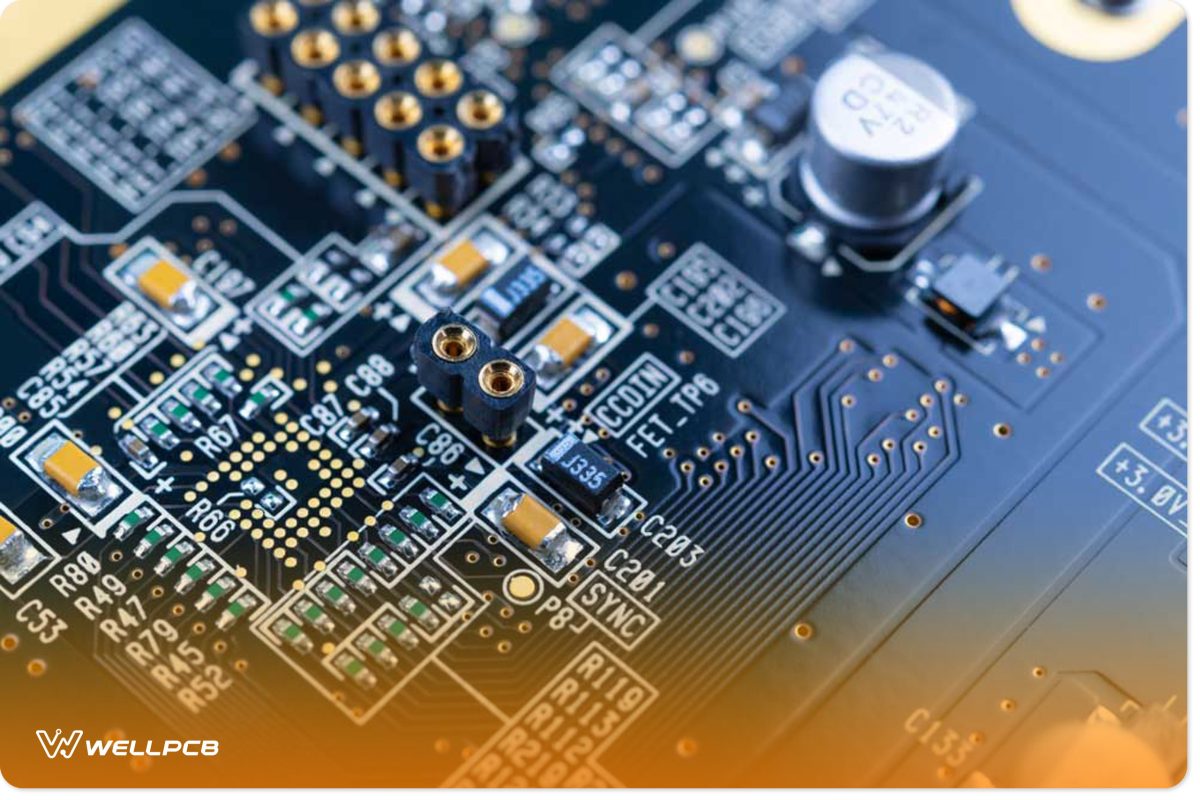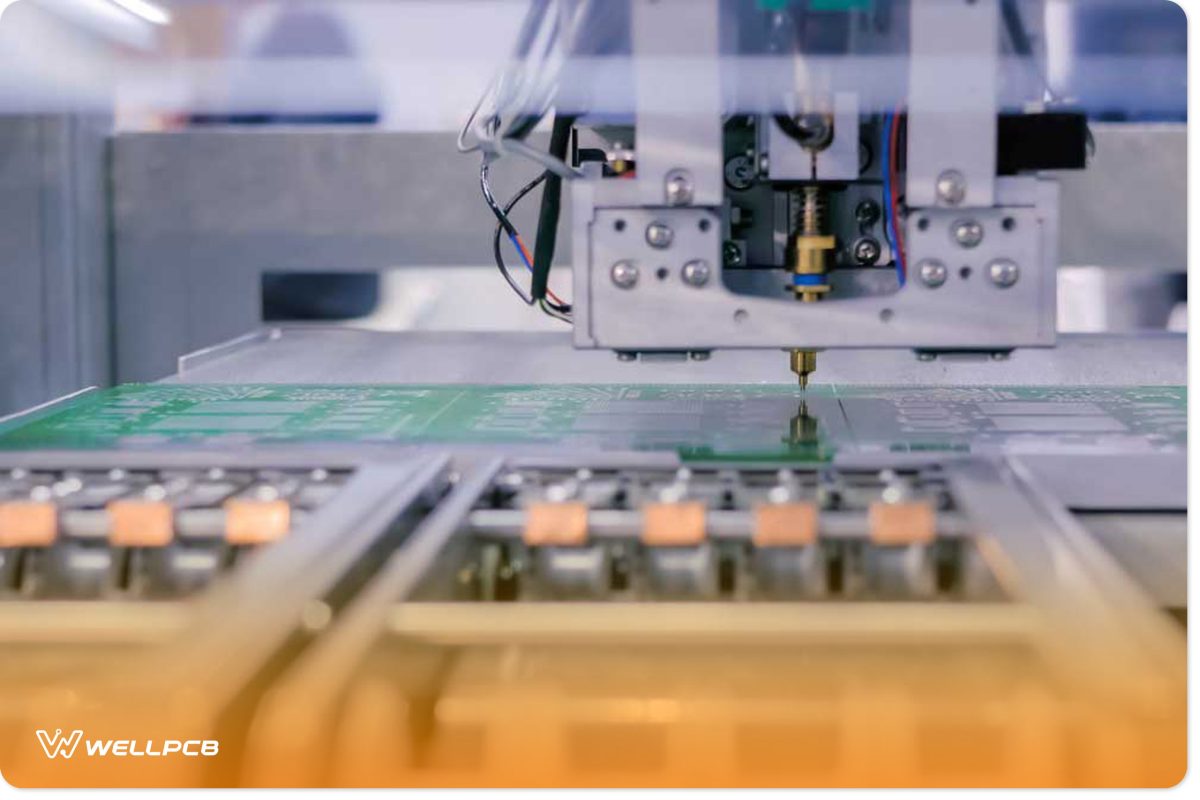Contents
What is an Antipad in PCB?

PCB
Anti-pads are void areas around a plated through-hole that stop other signals from connecting to the particular hole. Some PCB manufacturers use anti-pads to avoid short circuits between neighboring vias.
You can also use Antipads on landing pads and internal plane vias. However, the technique causes several disagreements in modern PCB designs.
The considerable debate surrounding its use in multilayer PCBs takes the form of an always/never choice, meaning you either love or hate it. It’s similar to the disputes surrounding ground plane splits, orthogonal routing, and thermal reliefs.
However, understanding the benefits of Antipodes on PCB signal integrity can save you some troubles when designing modern boards.
How to Model a Via and Its Antipads?

PCB via drilling
Usually, your design software will apply an anti-pad automatically when you use a plated-through hole (PTH). It does this based on clearance rules you use to move through solid planes.
Also, you have two options when routing through a plane layer. First, you can create an anti-pad by surrounding the remaining conductors. Or, you can cut out a large section of plane encircling the via.
You must always keep space between your planes and walls to prevent short circuits and integrity loss.
The big question is: how large should I model the anti-pad past any internal non-functional and via pads? Before we answer that, you should know that all vias have parasitics. Therefore, they could suffer parasitic capacitance and inductance if not treated correctly.
Additionally, each via pad and the intersecting plane generates two parallel capacitors. Hence, your anti-pads should be big enough to deflect parasitic signals from entering the PTH. Anything larger than necessary would damage your board’s frequency.
Your anti-pad’s size will also affect the PCB manufacturing process. These issues relate to wandering, which impacts drilling the through-hole via a plane.
Drilling wander can shift the hole to the wrong location and expose the plane’s copper through the hole wall. This situation would create problems during the plating process.
Now, you must model your anti-pad large enough to accommodate any drilling wander and prevent the drill from piercing the plane layer. Again, it’s good practice to ask a trusted PCB manufacturer for recommendations is good practice.
How Does an Antipad on a Landing Pad Affect Signals?

PCB Signals
Creating anti-pads is a conflicting process. However, the good and bad reasons outweigh each other in specific situations.
For instance, anti-pads can help remove parasitic capacitance, and you can use them instead of opting for smaller landing pads.
However, most manufacturers won’t use anti-pads without validating their effects through simulations. As a result, you’d create a significant impedance discontinuity because of a large return path–especially if the anti-pad doesn’t have assistance from the vias and ground pour.
Notwithstanding, anti-pads on vias can allow parasitic tuning capacitance to match an aspect ratio’s inductance. Therefore, making it easy to control via parasitics and bandwidths. You can also use the dielectric constant to control via capacitance.
Moreover, creating anti-pads on landing pads will build a small impedance discontinuity. For this reason, your place would have some return and insertion losses. Unfortunately, it’s a big problem for high-speed channels that can go beyond 100 GHz, as you’ll have to avoid as much insertion loss as possible.
We recommend playing it safe and using anti-pads on landing pads only when necessary. Some situations where you need anti-pads on landing pads include setting a specific impedance value and reducing return loss.
What PCB Antipad Size Should You Use?

PCB Assembly
Your anti-pad’s size depends on manufacturing reliability, routing density, and signal integrity.
Note: Anti-pad sizes shouldn’t go below the minimum size requirements.
As we mentioned earlier, a poorly sized anti-pad can cause a critical problem during the PCB manufacturing process. Therefore, your anti-pads should be slightly larger than the pad’s diameter.
Problems that arise from a small anti-pad may pass visual inspection but fail the electrical checkups. For example, you can set your antipad’s size radius at one mil more significant than the pad’s radius.
However, always account for annular ring breakouts in your designs. So, we recommend setting the size at four mils more significantly than the pad size, depending on your drill’s diameter.
Also, consider how anti-pads will impact your routing density. For example, routing through copper pours will help you save board space. But if you’re passing through a plane, you’ll need an anti-pad surrounding the wall.
Using a larger anti-pad size will require a smaller clearance to make space for more traces on the copper pour layer.
Rounding Up
Anti-pads on PCBs are pretty easy to spot. You can see them when you route through a copper pour or plane layer. It provides the necessary clearance between the copper and via wall.
Usually, they look like blank regions encircling the via in a PCB layout. Although anti-pads are risky to pull off, it’s your job as a designer to balance your anti-pad objectives.
First, it’ll make your board manufacturable and offer the necessary electrical performance.
Do you have more questions? Feel free to contact us, and we’ll be happy to help.





